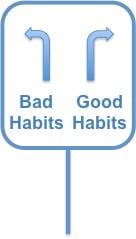
Despite the potential threat of the horrific death of their friend, and possible manslaughter charges, four unlikely accomplices worked tirelessly together to help...
According to a Canadian research firm, trust between a manager and employee, is the most important predictor of employee engagement.
When employees trust management and the organisation they are more likely to exchange ideas and information, discuss difficult issues and find ways to create synergy.
But if people don’t trust, they close down. It means they won’t contribute in meetings, collaborate or try anything new for fear of retribution.
To solve tricky business challenges requires harnessing the collective intelligence of your workforce. Yet, it can be hard for leaders to trust people. And vice versa.
Traditionally, organisations measure outputs or delivery metrics. But this unrelenting focus on securing bottom-line outcomes often detracts from other priorities such as developing relationships and empowering employees to contribute ideas.
When managers are pressured to reach performance targets and control costs, they can become so focused on their own job security that they impose more control on employees. Throwing trust out the window.
Outputs are a relic of the industrial age that was important to drive efficiencies in factories. Back then, monolithic teams toiled in a hierarchical structure that was heavily process driven and predictable. Decision-making was centralised and employees were poorly educated and not expected to think for themselves.
Today, the world of work involves highly educated employees working in nimble teams to solve complex problems and make decisions. Results take longer to achieve. It requires leaders who can trust employees to do the work based more on achieving outcomes rather than clocking in and out at a certain time each day.
The future of work is no longer not about how many widgets staff produce, but how well they made them together. Outcomes or inputs are lead indicators. They take time to solve and rely on two types of trust – faith that the strategy will work and trust that the team are doing the work to get there in the end.
Introducing behavioural metrics help leaders understand what part they play in building the company culture. It can also reduce leadership blind spots and resistance to change that get in the way of progress.
So how do you do it? How do companies make the hard transition to track behaviours that are required by the business moving forward?
What we have been doing is helping organisations identify and track trust behavioural metrics,using our proprietary SUCCEeD Together Trust Framework® which has been developed over eight years of research. It is based on six essential trust drivers that help leaders focus on the right management practices to build collaborative, high functioning teams. In other words, succeeding together, rather than in a siloed, competitive manner. In the absence of certain elements, you can expect more employee resistance and slower rates of change adoption. So let’s go through the six trust drivers that leaders can more readily gauge what behaviours they need to improve or maintain.
Support– We tend to trust those who are willing to put our interests above their own. How do your leaders demonstrate that they support their direct reports and peers? Do they help remove roadblocks, give credit, provide access to resources/training and connect people to each other? Do they get out of people’s way so they can do their best work? Are they there to help people with emotional issues or do they only see people as expendable resources?
United to Solve Customer Problems – Leaders who regularly and clearly communicate the vision and link the meaning of work provide employees with the security they need to stop them getting all lost at sea. How do your leaders help employees feel that their work is meaningful and that they are making a difference to your customers? Do employees relate to each other through being able to collectively understand the meaning in their work?
Clarity in Thought and Communication – The quality of your communication determines the quality of your relationships. If you’re in business, you’re in the relationships business. Do employees have the right structure and clarity to understand the vision, goals, roles and execution plans? Do leaders communicate clearly, in order to reduce ambiguity and increase certainty? Are some teams the last to know what is going on in the company?
Candour – One of the hallmarks of great leaders is their willingness to “get real” about their business situation by unflinchingly confronting the facts, no matter how unpleasant. Do leaders talk openly about issues, provide timely feedback and recognise issues? Can people speak up? Do people feel listened to and action is taken about their concerns?
Empowered to Grow – You can’t grow a company, if the people within it aren’t growing. According to a study by Interaction Associates, 85% of people who trust management feel empowered to take risks and learn from mistakes. But when employees don’t trust management that drops to a piddly 28%. How do your leaders challenge people to be their best and provide learning opportunities? Do your leaders believe people can grow and change or do they have a fixed mindset? How often are your leaders learning new things and modelling the right behaviours? Are people comfortable in taking calculated risks and making mistakes?
Dependability – At its core, trust involves an assessment of how comfortable we are in relying on someone or groups of people. Can people count on one another to accomplish high quality work on time? Do teams work together, share information and insights or form silos? How do your leaders ensure their teams are not creating silo based thinking and managing?
Focusing on outputs or delivery metrics alone makes it hard for organisations to change. After all, the performance focus is based on lag indicators that are by-products of past performance with limited impact on future performance. Instead, there also needs to be a handful of outcome based metrics, rooted in building trust, that best represent what activities leaders must do to support future growth.
A study by Zenger and Folkman researched 400,000 360-degree surveys. They found that the most successful leaders possessed a powerful combination of competencies. Sixty-six percent (66%) of leaders in the top quartile possessed both a focus on results and interpersonal skills. Meanwhile, only 13% of leaders who focused on results alone and only 9% of leaders who focused on interpersonal skills alone reached the 90% percentile. In other words, being focused on results AND interpersonal competencies equalled top leadership performance. Just being skilled in achieving results alone or even interpersonal skills alone aren’t enough.
Leaders who can focus both on results and interpersonal skills have the ability to create the right work environment. It’s all about transitioning into trusting employees to do work whether they are based remotely or in the office.
Figuring out the most important behaviours that fall under these six categories, in terms of your values and strategy is critical. Yet, few organisations make it clear what specific leadership behaviours are required to meet their new vision or strategy.
It means they focus on outputs that hide what is most revealing about the organisation. That is- what activities the people in the business are doing to support future growth. After all, as difficult as it is for old school leaders to believe, numbers don’t run a business – people do.

Despite the potential threat of the horrific death of their friend, and possible manslaughter charges, four unlikely accomplices worked tirelessly together to help...

Researchers have found that institutional habits exist in almost every organisation. Interestingly, one of the main differences between a company that outperforms on...